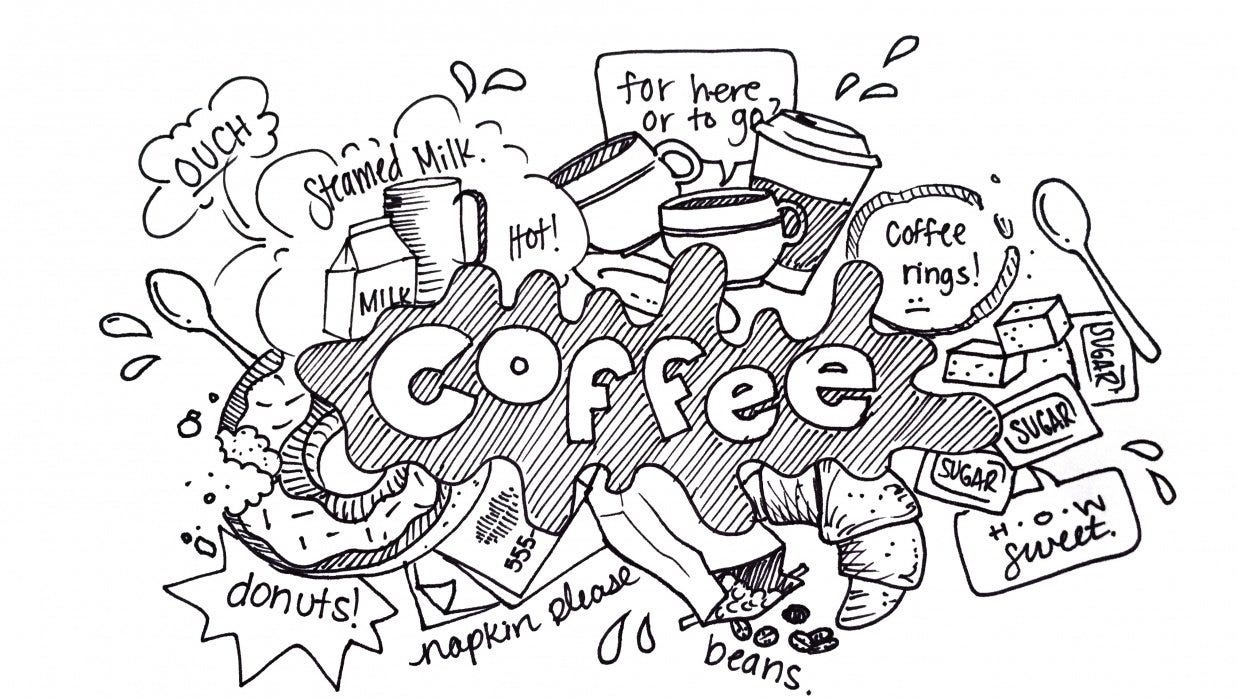
Why do people doodle? Doodling isn't just random scribbles on paper. It’s a way to express creativity, relieve stress, and even improve focus. Many people find that doodling helps them think more clearly and stay engaged during long meetings or lectures. Studies show that doodling can enhance memory and aid in problem-solving. It’s not just for kids; adults benefit too. From intricate patterns to simple shapes, doodles can reveal a lot about a person’s thoughts and emotions. Whether you’re an artist or someone who just likes to draw during downtime, doodling has surprising benefits that go beyond the page.
Doodling: More Than Just Scribbles
Doodling often gets dismissed as a mindless activity. However, there's more to these seemingly random sketches than meets the eye. Let's dive into some fascinating facts about doodling.
-
Doodling can improve focus. Studies show that doodling helps people concentrate better. It keeps the brain engaged, preventing daydreaming.
-
It reduces stress. Drawing simple shapes or patterns can be a form of meditation, helping to calm the mind.
-
Doodles can reveal emotions. The shapes and lines people draw often reflect their current mood or feelings.
-
It boosts creativity. Engaging in doodling can spark new ideas and enhance creative thinking.
-
Doodling aids memory retention. People who doodle while listening to information tend to remember more details.
Historical Significance of Doodling
Doodling isn't a modern phenomenon. It has historical roots that stretch back centuries.
-
Ancient doodles exist. Archaeologists have found doodles in ancient manuscripts and cave paintings.
-
Leonardo da Vinci doodled. His notebooks are filled with sketches and random drawings.
-
Presidential doodles. Many U.S. presidents, including Thomas Jefferson and Ronald Reagan, were known to doodle during meetings.
-
Medieval manuscripts. Monks often doodled in the margins of religious texts.
-
Doodles in art history. Famous artists like Picasso and Matisse often doodled as part of their creative process.
Psychological Insights from Doodling
Doodles can provide a window into the mind, offering insights into a person's psyche.
-
Shapes matter. Circles often indicate a need for harmony, while squares suggest a desire for control.
-
Repetition reveals anxiety. Repeated patterns or shapes can indicate nervousness or stress.
-
Doodles can show personality traits. For example, detailed doodles might suggest a meticulous nature.
-
Color choices matter. Bright colors can indicate happiness, while darker shades might reflect sadness or anger.
-
Placement on the page. Doodles on the left side of a page can indicate past-focused thoughts, while those on the right suggest future-oriented thinking.
Doodling in Modern Times
In today's world, doodling has found new relevance and applications.
-
Doodle art therapy. Therapists use doodling as a tool to help clients express emotions.
-
Corporate meetings. Some companies encourage doodling during meetings to boost creativity and engagement.
-
Educational tools. Teachers use doodling to help students understand and retain complex information.
-
Digital doodling. Apps and tablets have made it easier for people to doodle anywhere, anytime.
-
Social media trends. Platforms like Instagram and Pinterest have popularized doodle art, with many artists gaining large followings.
Fun Facts About Doodling
Doodling isn't just beneficial; it's also fun and quirky.
-
Doodle competitions exist. Events like the Google Doodle contest invite people to create unique doodles.
-
Doodles in space. Astronauts have been known to doodle while aboard the International Space Station.
-
Celebrity doodles. Many celebrities, including Johnny Depp and Taylor Swift, enjoy doodling in their free time.
-
Doodle merchandise. Doodle designs are popular on products like notebooks, phone cases, and clothing.
-
World records. The largest doodle ever created spanned over 11,000 square feet.
The Science Behind Doodling
There's a lot of science that explains why doodling is so beneficial.
-
Brain activity. Doodling activates the brain's default mode network, which is linked to creativity and problem-solving.
-
Hand-eye coordination. Regular doodling can improve fine motor skills and hand-eye coordination.
-
Visual learning. Doodling helps visual learners process and retain information more effectively.
-
Cognitive benefits. Engaging in doodling can enhance cognitive functions like memory, attention, and comprehension.
-
Stress hormones. Doodling can lower cortisol levels, reducing stress and promoting relaxation.
Doodling Techniques and Styles
There are various techniques and styles that people use when doodling.
-
Zentangle. A method of creating intricate patterns that promotes relaxation and focus.
-
Mandalas. Circular designs that are often used in meditation and mindfulness practices.
-
Cartoon doodles. Simple, exaggerated drawings of characters or scenes.
-
Abstract doodles. Non-representational shapes and lines that don't depict specific objects.
-
Pattern doodles. Repeating shapes or designs that create a cohesive look.
Doodling in Popular Culture
Doodling has made its mark in popular culture in various ways.
-
Animated doodles. Shows like "DoodleBob" from SpongeBob SquarePants feature doodle characters.
-
Doodle books. Books like "Wreck This Journal" encourage readers to doodle and create art within the pages.
The Power of Doodling
Doodling isn't just mindless scribbling. It boosts creativity, memory, and focus. Studies show doodlers retain more information than non-doodlers. It’s a stress-buster, too. When you doodle, your brain relaxes, reducing anxiety. Plus, it’s a great way to express emotions and ideas without words.
Next time you're in a meeting or class, grab a pen and start doodling. You might find you’re more engaged and less stressed. And who knows? Those little drawings might spark your next big idea. So, don’t dismiss doodling as a waste of time. Embrace it as a tool for better thinking and well-being.
Was this page helpful?
Our commitment to delivering trustworthy and engaging content is at the heart of what we do. Each fact on our site is contributed by real users like you, bringing a wealth of diverse insights and information. To ensure the highest standards of accuracy and reliability, our dedicated editors meticulously review each submission. This process guarantees that the facts we share are not only fascinating but also credible. Trust in our commitment to quality and authenticity as you explore and learn with us.
